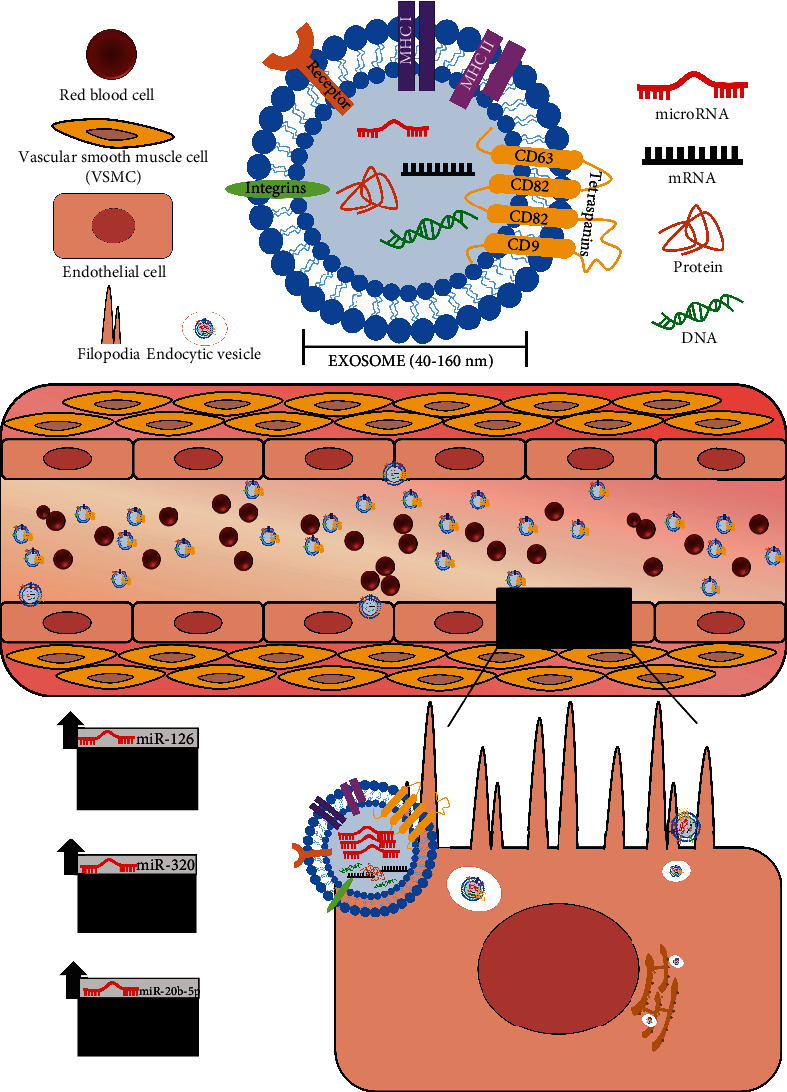Figure 1.

Exosomal miRNAs as mediators of endothelial dysfunction. Exosomes (40-160 nm) function in cell-to-cell communication via transfer of exosomal content (i.e., miRNAs, proteins, mRNA, and DNA) to neighboring or distant cells. Exosomes can be recruited to the endothelial cell body by filopodia surfing. They are then internalized and shuttled within endocytic vesicles and scan the endoplasmic reticulum and allow for entry of exosomal miRNA cargo into RNAi translation machinery to induce a functional response [62]. For example, miR-126 functions to improve vascular tone. However, a reduction in miR-126, as often reported in T2DM, worsens vascular tone and endothelial function. Exosomal enrichment of miR-320 and miR-20b-5p impairs endothelial proliferation and angiogenesis. Thus, the uptake of exosomes enriched with certain miRNAs can impair endothelial function and further accelerate the microvascular complications associated with type 2 diabetes mellitus.
